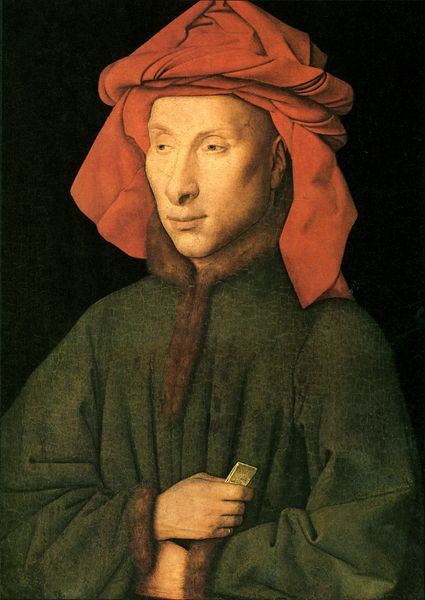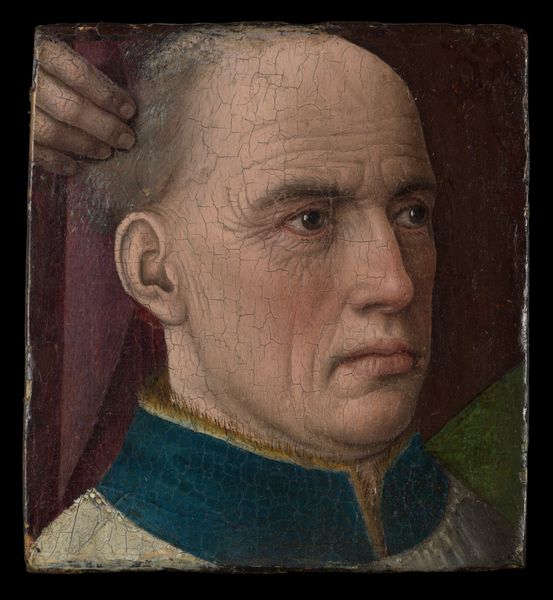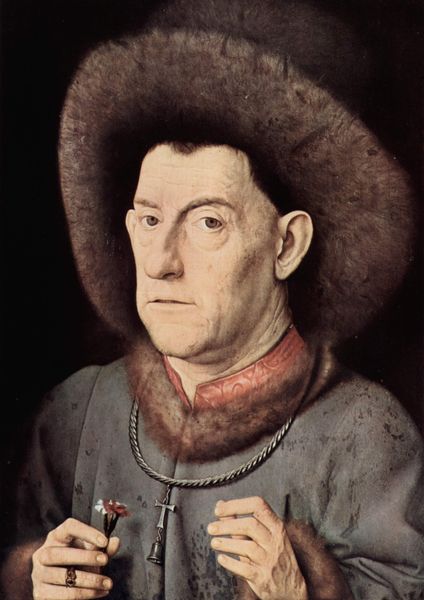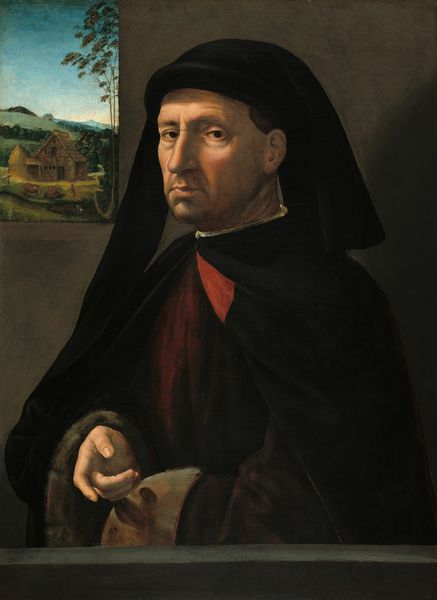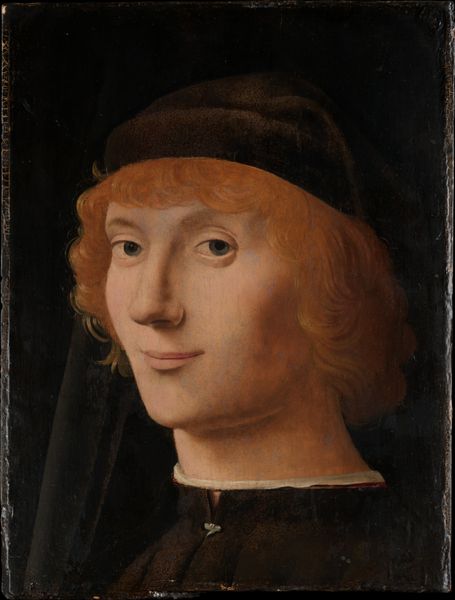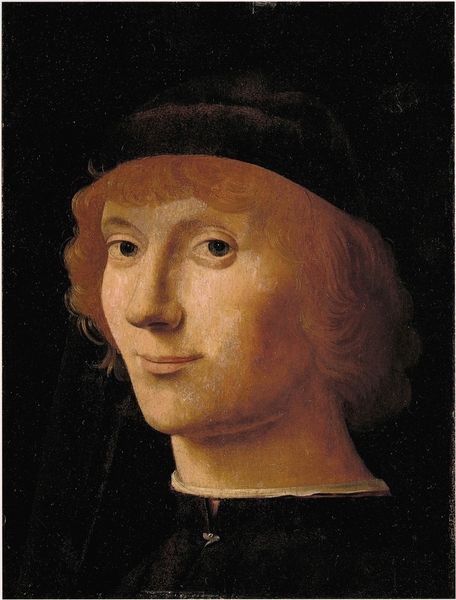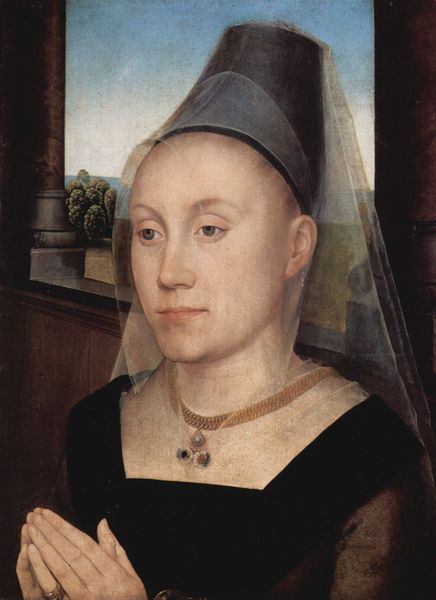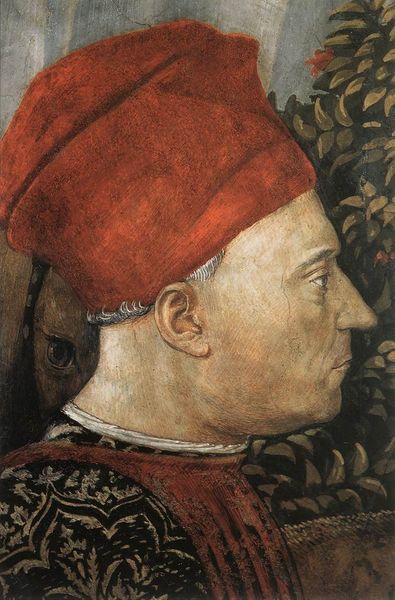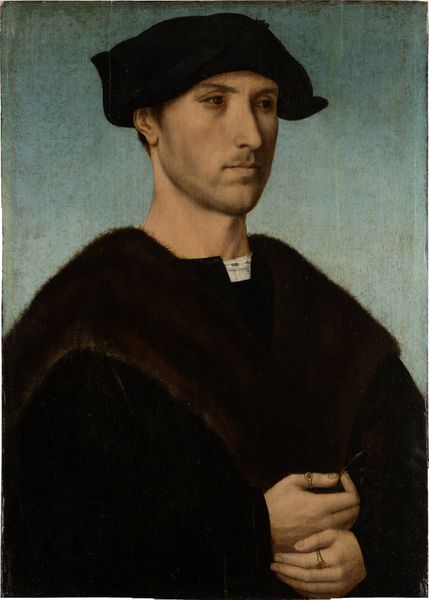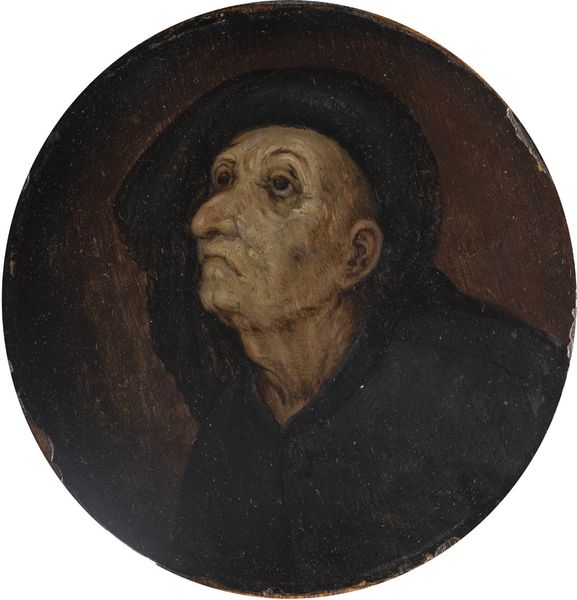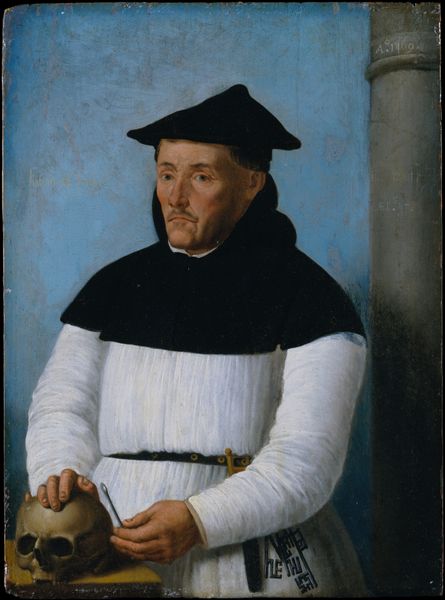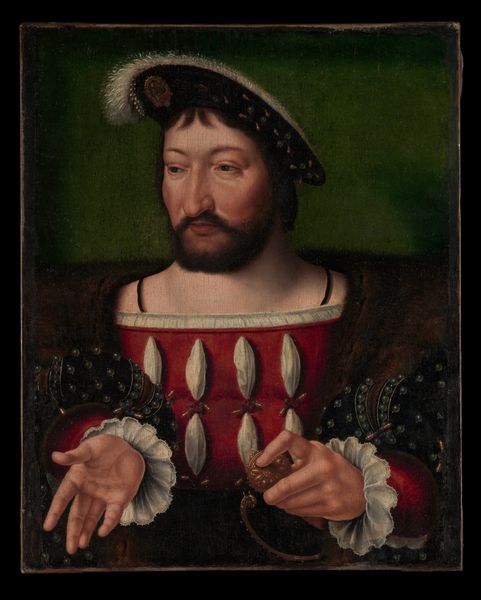
painting, oil-paint
#
portrait
#
portrait
#
painting
#
oil-paint
#
history-painting
#
early-renaissance
#
realism
Dimensions: 16.6 x 22.5 cm
Copyright: Public domain
Curator: Here we have Jan van Eyck's "Man in a Blue Turban," a captivating oil painting believed to have been created around 1433. It's currently housed at the National Museum of Art of Romania in Bucharest. Editor: Oh, I see a somber mood settling around this character. And the painting style is astonishing in the sense of meticulous detail! He almost seems a little burdened, you know? By some inner reflection? The color seems almost oppressive, but it brings this peculiar calm, very contemplative... Curator: The turban itself holds significant cultural weight. Head coverings, particularly elaborate ones like this, were often associated with status and occupation. In 15th-century Europe, it could denote connections to the East, learning, or a profession, as well as civic or religious standing, depending on the color, fabric, and manner of wearing. Editor: Blue has such a multifaceted significance; on the one hand, that shade speaks volumes of royalty, devotion and faith. On the other, I perceive a shadow of melancholy in that blue – quite a striking juxtaposition! I feel that almost an uncertainty looms behind those watchful eyes, perhaps like someone at a turning point? What secrets do you hold, mysterious gentleman? Curator: What's truly intriguing is the subject's gaze. He looks directly out at the viewer, which was somewhat unusual for portraits of that period. Van Eyck seems interested in capturing individual likeness and psychological depth. And, while his expression appears self-assured, it also appears tinged with almost wistful understanding, inviting introspection. Editor: I must admit, there's something almost hauntingly contemporary about this fellow. He’s both completely fixed in a historical time capsule, but yet, he reminds us of ourselves now. We continue with adornment and color for both self-expression and to hint towards greater truths. So timeless, actually. Thank you, van Eyck! Curator: Yes, exactly, in a sense, his features and adornments are artifacts of human experience. Seeing how this man decided to portray himself in an intentional manner truly allows a bridge through history for reflection and memory, even centuries later. Editor: I think it gives me shivers to remember how deeply images affect how we perceive the world around us even now. Curator: A perfect parting note as we now consider new forms of portraiture today. Thank you for these reflections!
Comments
No comments
Be the first to comment and join the conversation on the ultimate creative platform.
